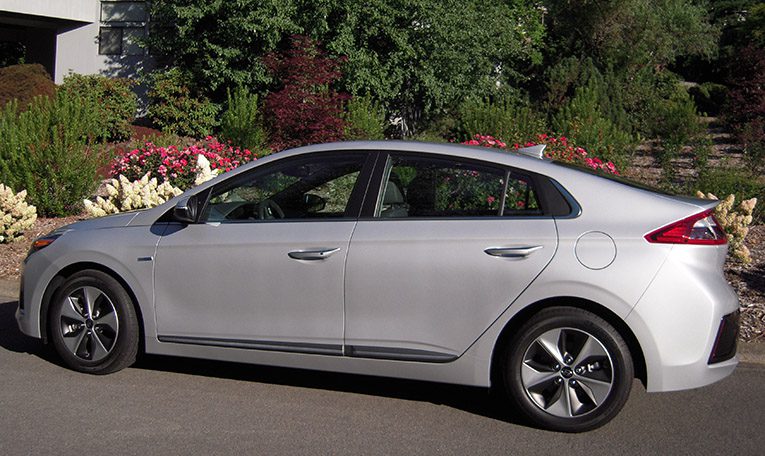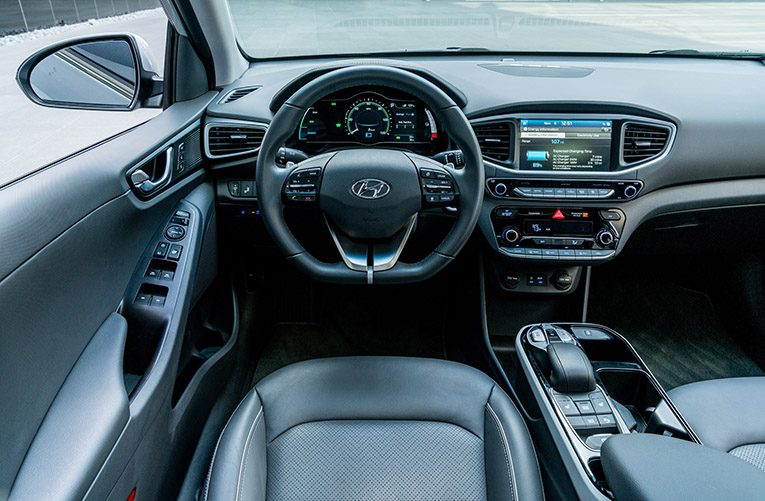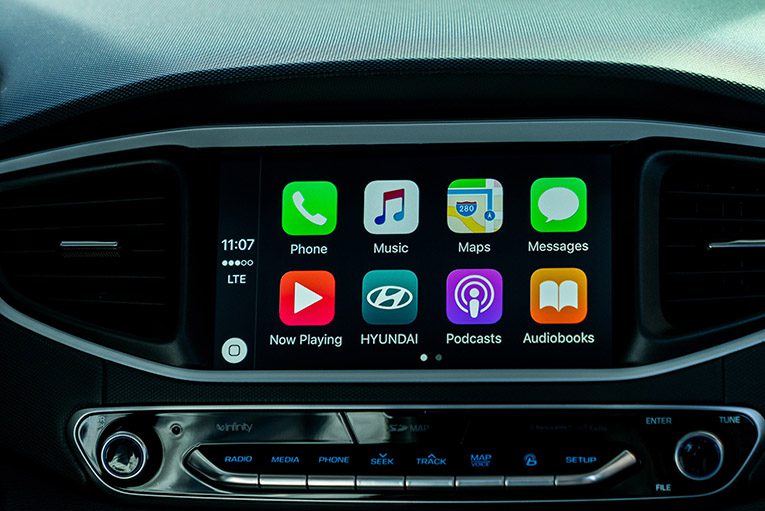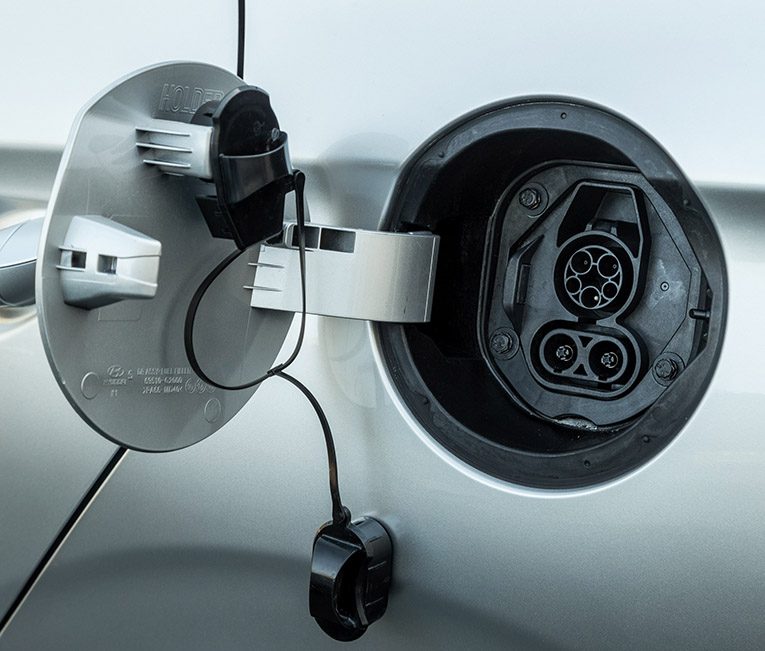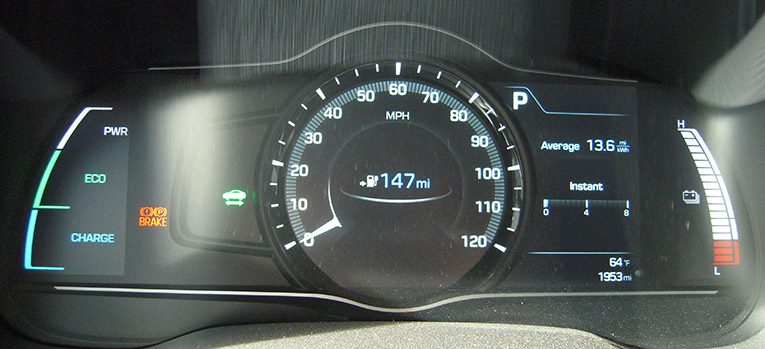The Hyundai Ioniq is available as a hybrid, electric and plug-in hybrid. The Korean automaker says it’s the first time any automaker has offered one model with three electrified low-and-zero-emission powertrain choices. Hyundai has made electric and plug-in hybrid versions of other models before, but the Ioniq is only available as an EV or hybrid, not with a traditional engine.
Like the big dog, the Toyota Prius, the Ioniq is only available as a four-door hatchback that seats five.
The Ioniq Hybrid is available in Blue, SEL and Limited trims. Starting prices range from $22,200 to $27,500. The Ioniq Electric is available in Electric and Limited trims with starting prices at $29,500 and $32,500, respectively. Hyundai hopes the Ioniq will appeal to shoppers who want a green car but also want style and lots of available features.
The Ioniq has a 124-mile range, compared to 107 for the Nissan Leaf and 238 for the Chevrolet Bolt EV. I got more range during my week. After plugging the Ioniq in every night in a normal (110/120V) plug, I’d have 147 miles of range as I drove off to work. I’d often arrive at work with 149 miles thanks to regenerative braking. Of course, if you powered on the AC, the range would fall.
The Ioniq Electric is powered by a 28 kWh lithium-ion polymer battery that has a maximum output of 88 kW (118 horsepower) and 218 pound-feet of torque. It’s paired with a single-speed reduction-gear transmission.
EPA ratings for the Ioniq Electric are 150 MPGe (miles per gallon equivalent) city and 122 MPGe highway with a combined rating of 136 MPGe, the highest efficiency rating of any electric vehicle sold in the U.S.
The Ioniq Electric can be charged at Level 1, 2 or 3. I have a regular Level 1 (110/120V) plug in my garage and it would take anywhere from seven to 11 hours to fully charge after a day’s worth of driving. A level 2 charger (220/240V) takes about four hours and 25 minutes. With a Level 3 DC fast-charger, Hyundai says it only takes about 23 minutes to charge the battery up to 80 percent.
It’s enjoyable to be behind the wheel of the Ioniq. It’s not as dull as some hybrids, and in fact, the driving dynamics can make you forget you’re behind the wheel of an EV. You can choose from Normal, Sport or Eco modes. I kept it in Normal mode most of the time. Eco mode upshifts earlier and uses more regenerative braking—just taking your foot off the accelerator would bring the Ioniq to a crawl or stop. There are also regenerative brake-level control paddles on the steering wheel. To me, the Sport mode isn’t one I’d use often as I’m more focused on range than performance when driving an EV.
The interior is nice. You’ll notice features that aren’t always available on many other EVs, including power-adjustable leather seats and a power tilt-and-slide sunroof. Many other comfort and driver assistance technologies are available as well including a rear view camera, Lane Departure Warning, Blind Spot Detection Smart Cruise Control, Automatic Emergency Braking with Pedestrian Detection, and Rear Cross-Traffic Alert.
Graphics look sharp on the seven-inch high-definition touchscreen that includes Apple CarPlay and Android Auto. There’s even a wireless inductive-charging pad you can use to charge your smartphone. The infotainment system will also display your energy consumption as well as nearby charging stations.
The Ioniq Electric has 23.8 cubic feet of storage in the hatch. The 60/40 split-folding rear seats give flexibility in hauling passengers and cargo.
The good:
Highest efficiency rating of any vehicle sold in the U.S. at 136 MPGe
Decent range at 124 miles
Well-appointed interior
Lots of comfort and technology features are available
Reasonably priced with a lot of features for the money
Stylish looks don’t scream “green car!”
Versatility of a hatchback
The not-so-good:
Range is much less than Chevy Bolt
Pricing info:
My tester starts at $32,500. The Ultimate Package is $3,500 and adds power tilt-and-slide sunroof, automatic emergency braking, smart cruise control with stop/start, lane departure warning, HID headlights with dynamic bending light function, navigation system with eight-inch touchscreen display, Infinity Premium Audio with eight speakers, wireless device charging for compatible smartphones, and LED interior illumination. Freight and handling is $835 bringing the grand total to $36,835.
Bottom line:
The Ioniq Electric doesn’t have the range of the Chevy Bolt. But a range of 124 miles, or 147 miles like I got, is certainly enough for many drivers. On top of that, the Ioniq boasts stylish looks, good driving dynamics, a well-appointed interior and a lot of features and tech you don’t always get with an EV.




